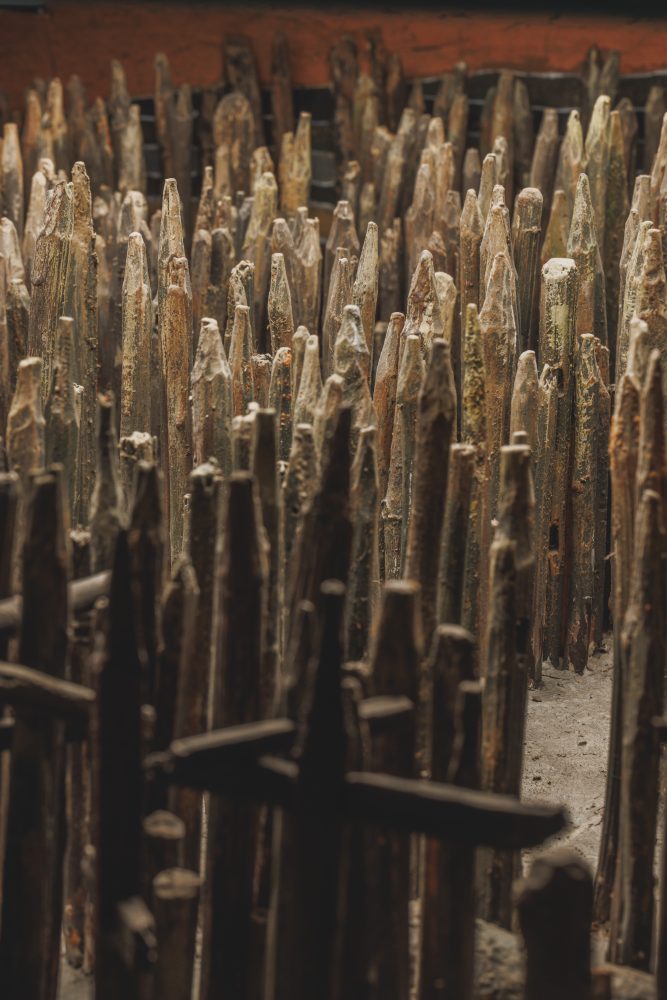 Cloth
Cloth
The clayey bottom of the lake has preserved artefacts made from plants.
Balls of thread, fragments of net, pieces of cloth made in various ways with seeds woven in for decoration, a belt-sash with a pattern of concentric diamonds, created with a technique similar to brocade.
 Bronze
Bronze
Diadems, brooches, axe blades and the beautiful “Ledro-type dagger”: all relics in bronze, the main material at the time of the pile dwellings, so important and innovative that it has been used to describe a period in history, the Bronze Age.
 The canoe
The canoe
Dug out of a single piece of pine over 5 metres long, the canoe is the queen of all the wooden finds brought to light during the digging. Made about 3,600 years ago, it was probably used to transport material and tools from one side of the lake to the other, or to reach spots that offered better fishing.
 Bread
Bread
The history of bread goes from the Palaeolithic Age, via the ancient Egyptians and even leaves a trace in Ledro. That’s right! Our pile-dwelling ancestors used to grind cereals and cook bread, just like the exhibit in one of the “jewel display cabinets”.
